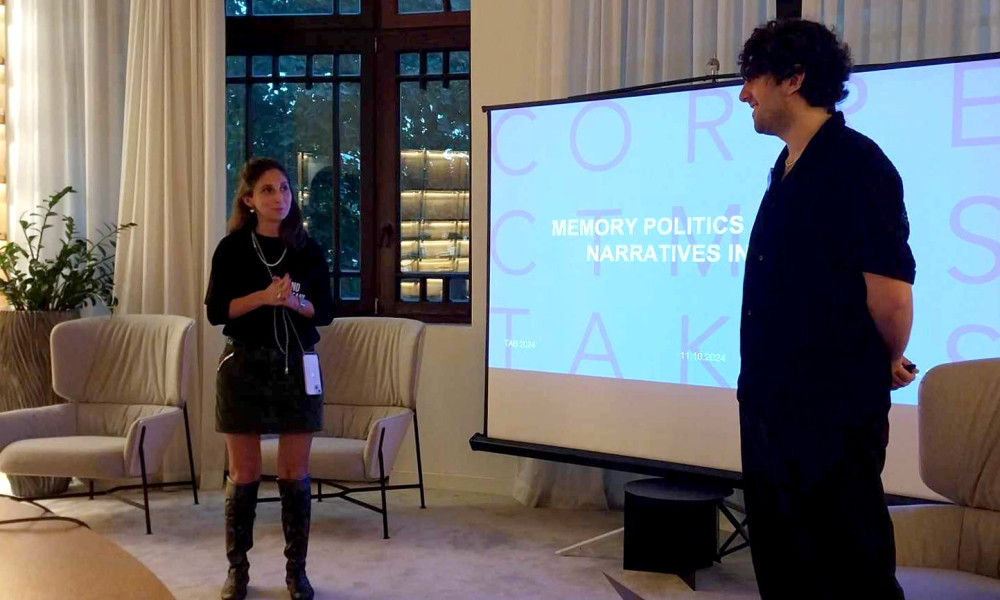The CSN Lab had the honour of taking part in this year’s Tbilisi Architecture Biennial (TAB). Arsen Abrahamyan, an architect, urban researcher, and member of our team, presented two of our projects that combine urban, environmental, and memory studies: “Getar: Memory of a River” and “Kechut: Memory Under the Water.” This was a notable occasion, not only for the CSN Lab but also for Armenia, marking the country’s engagement in the biennial, which is of importance in both the neighbouring country and the region as a whole.
Founded in 2017, TAB unites professionals from diverse disciplines to foster critical discourse on architectural and urban issues, engaging policymakers, researchers, artists, activists, and other stakeholders from Georgia and beyond. This year’s initiative focused on matters related to natural environments, such as resource extraction, land exploitation, the global climate crisis, management of water resources and the pivotal role of architecture in addressing these challenges.
The biennial placed a particular emphasis on the complex dynamics between people and the environments they live in. In this context, the CSN Lab’s participation in the programme, along with the presentation of the “Getar: Memory of a River” and “Kechut: Memory Under the Water” projects, was timely and impactful. Both studies highlight critical issues surrounding water resource management, addressing challenges rooted in the complex and colonial Soviet past, as well as current crises. In this regard, it is important to note that the research team focused particularly on the memories of people and their connection to urban and natural environments, thus offering a comprehensive analysis of how drastic transformations can affect social structures.
In the framework of his presentation, Arsen Abrahamyan, co-author of the “Kechut: Memory Under the Water” project and one of the key researchers in the “Getar: Memory of a River” project, discussed the transformations of urban and natural environments in both Soviet and post-Soviet periods in Armenia, stressing their cultural and social impacts and consequences. The researcher highlighted the importance of an interdisciplinary approach in research by drawing on examples from the CSN Lab’s projects, specifically underscoring the issue of eco-migration within the broader environmental discourse, which remains largely neglected by researchers in the region.
A discussion followed Abrahamyan’s presentation. The questions of the attendees once again revealed that Armenia and Georgia not only share a common complex and colonial past, but currently have similar challenges and crises regarding the urban environment, the preservation of architectural heritage, and the transformation of the natural landscape.
The collaboration within TAB exemplified the exchange of expertise and cultural dialogue between Armenia and Georgia—an endeavour of strategic importance for the Cultural and Social Narratives Laboratory (CSN Lab).

